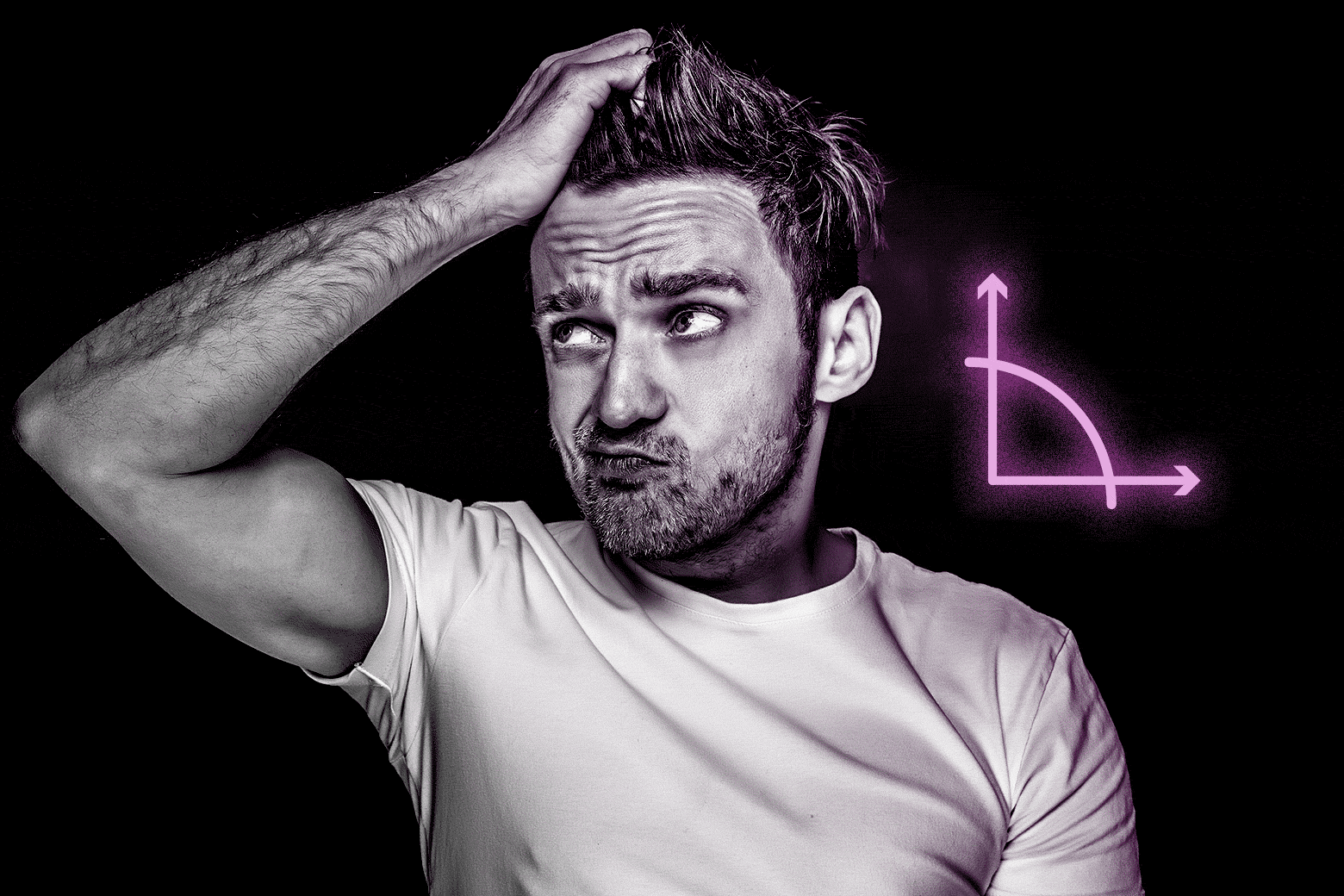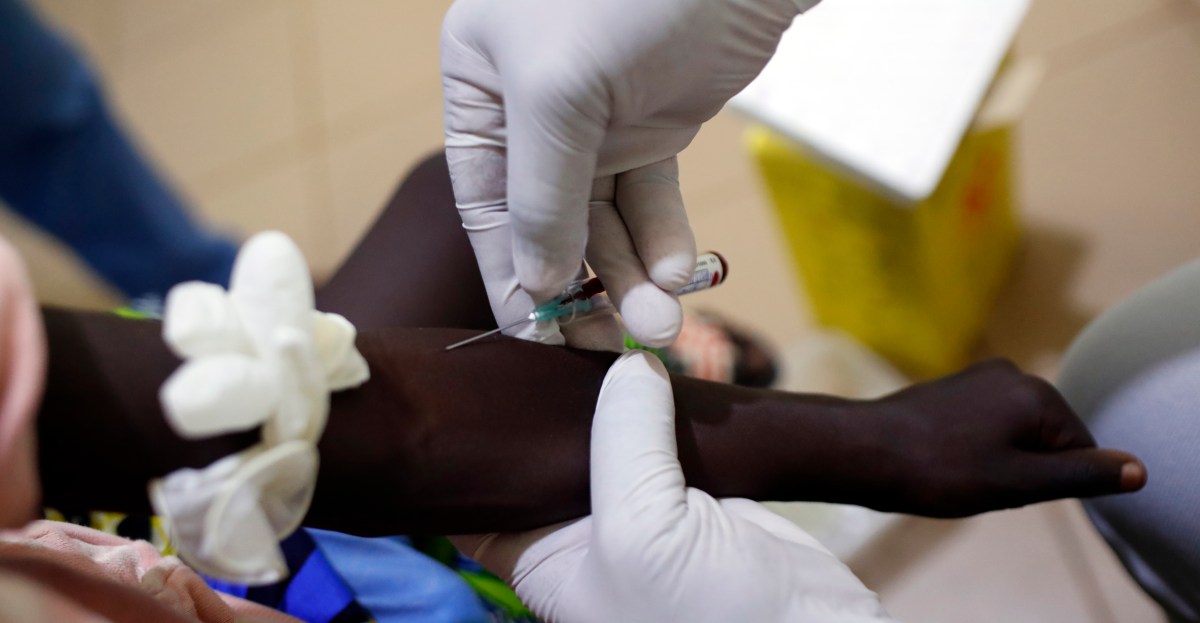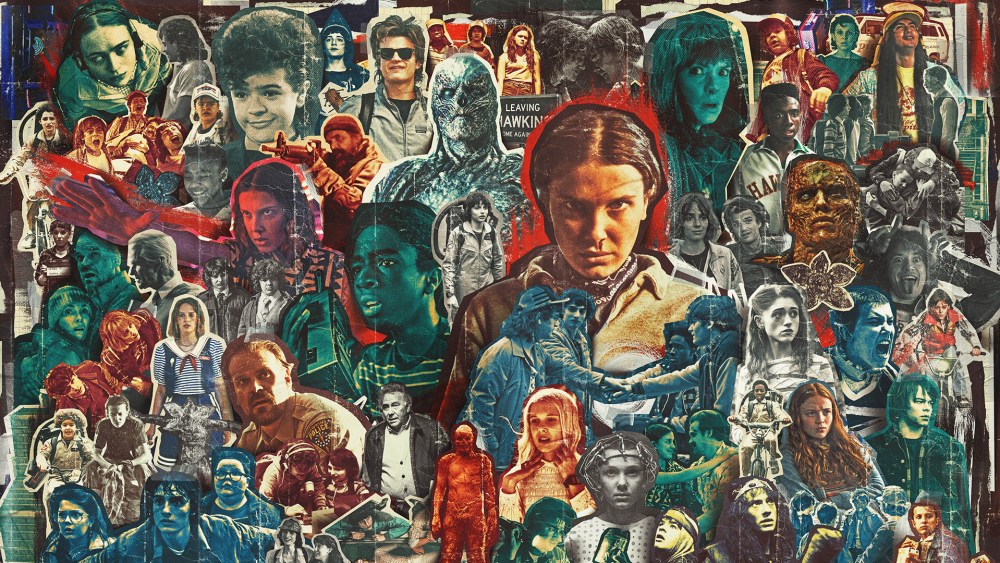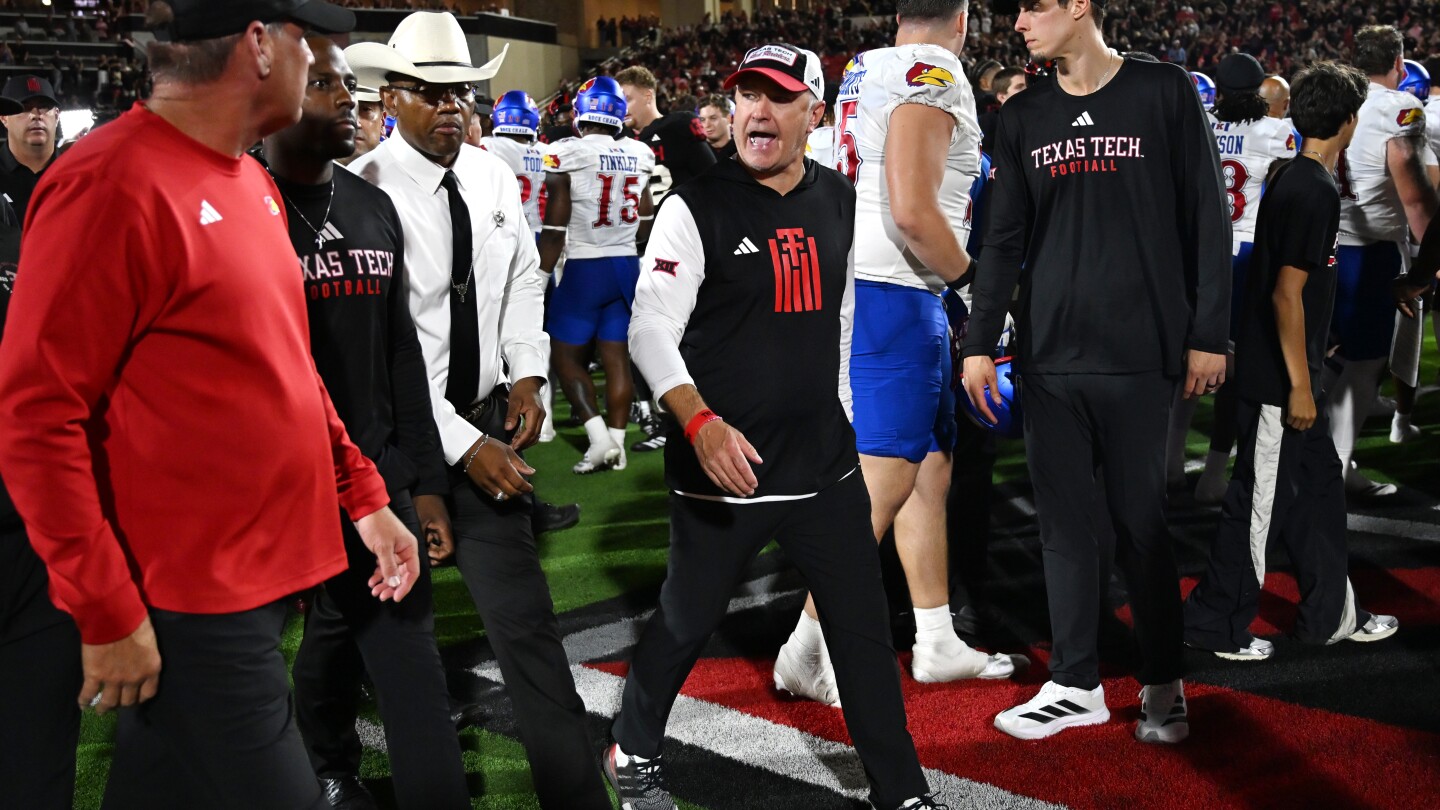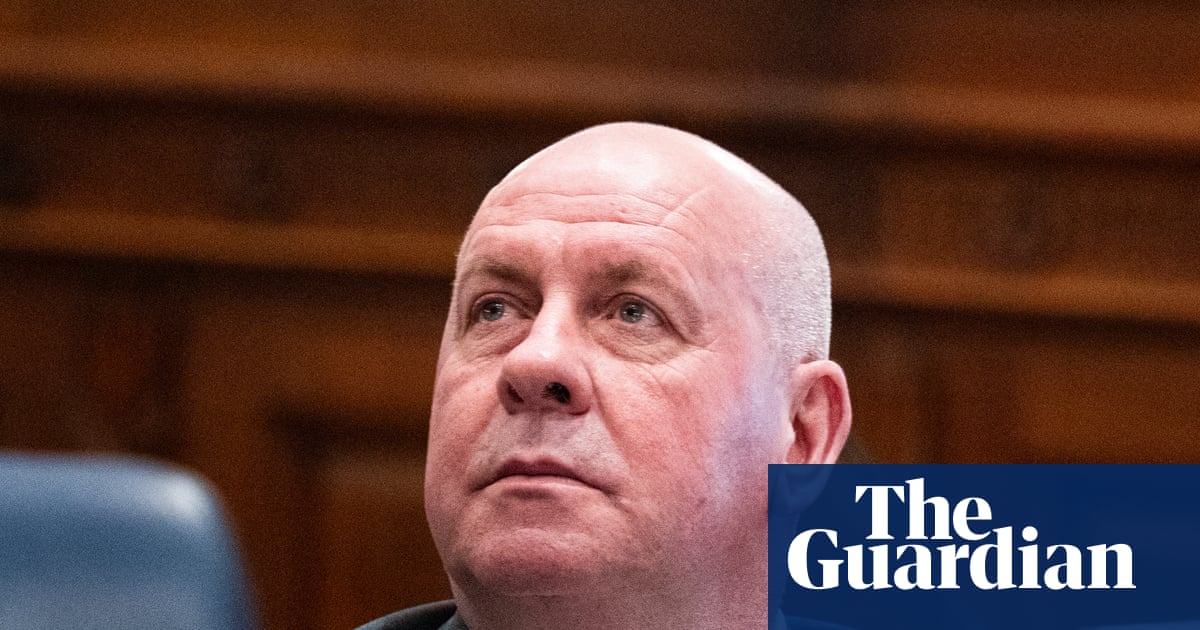“Bang!”
Inside a dark military lab, a booming voice announces an unseen explosive event, and Millie Bobby Brown falls to the floor, a drop of blood trickling from her nose. Sirens flash above her as she curls up amid piles of shattered glass and smashed equipment, signs of a recent, violent struggle. She cries out in pain, and the disembodied voice speaks once more.
“You hear footsteps coming from behind the door,” says Matt Duffer, his direction piped in from a hidden speaker. “Closer. Closer. Door opens. You see something! Get up. Cut!”
Ryan Pfluger for Variety
It’s July 2024, and Matt and his twin brother, Ross Duffer, are on the Atlanta set of the fifth and final season of “Stranger Things,” the television phenomenon they created that propelled Netflix from an upstart streamer into a transformative force in the entertainment industry. They’re in the middle of directing the show’s feature-length fourth episode, “Sorcerer,” and today’s scene, Day 131 of the yearlong shoot, places Brown’s psychokinetic teenage heroine Eleven at the precipice of a game-changing revelation. (Fear not: This story will be spoiler free.)
Matt Duffer (he’s the chattier one, with longer, unkempt hair, a streak of which is white above his forehead) and Ross Duffer (he’s the quieter one, with shorter hair and a perpetual enigmatic smile) sit at the nearby monitors. While the crew prepares to shoot what happens once Eleven passes through that mysterious door, Brown wanders over to watch playback of what she’s just filmed.
“I need to pee so badly, but I really want to see it,” she says. “Did you like the last one? The one before?”
Ross shrugs and laughs. “I don’t know. There were a lot of good ones!”
“I’ll just focus on my performance, like when I was 12,” she says, with a dramatic sigh. “I peaked at 12.” She cackles as she passes by a reporter. “You can write that in Variety. I peaked at 12 and it’s been downhill ever since!”
Later in the day, the brothers sit down in the elaborate green room on Stage 16 of the 35-acre production facility. Alongside a ping pong table and the “Stranger Things” pinball game, a re-creation of the show’s famed Christmas lights alphabet from Season 1 is on display — a reminder of how far the pair have come since the show first premiered in 2016. When they started, they were unknown 30-somethings with few credits to their name. Now, at 41, they’re certified star-makers, having supercharged the careers of the cast (Brown, David Harbour, Sadie Sink, Joseph Quinn — the list goes on!), not to mention reasserting the pop-culture bona fides of ’80s icons like Winona Ryder, Paul Reiser and Sean Astin. And now, with a lucrative new four-year deal for film and TV at Paramount for their production company, Upside Down Pictures, they’re primed to become the crown princes of Hollywood.

“We took very little time off, very little time for ourselves. The break between seasons was almost non-existent.”
– Ross Duffer
Ryan Pfluger for Variety
“We are more confident and knowledgeable than we were back then,” Matt says, taking a deep breath. “But there’s all these other added pressures now. It feels like there’s the Eye of Sauron on you, a lot of people watching, lots of expectations. A lot of money is being spent.”
Like “Game of Thrones” and “Lost” at their height, “Stranger Things” has seized the public’s imagination by blending a deep ensemble of richly drawn characters with dazzling — and expensive — genre storytelling on a cinematic scale. Like those earlier shows, too, “Stranger Things” has woven a knotty mythology — in this case, involving a phantasmagorical alternate dimension called the Upside Down that’s populated with ferocious supernatural entities, along with a nefarious government program bent on weaponizing children with psychic abilities. The stakes of “Stranger Things” are no less than the end of the world, all taking place within the bucolic 1980s suburban setting of fictional Hawkins, Indiana. The young stars have spent literally half their lives on this show, their characters’ fierce and hard-fought bonds creating a found family that fans have devoured with ever-increasing popularity. The series has hit the Netflix Top 10 in all 93 countries that the company measures; Season 4 was the first-ever English-language series to cross 1 billion hours streamed on the platform, and continues to be the streamer’s third-most-popular English-language TV title.
And now the Duffers must somehow resolve all of these plot threads, along with the storylines of a massive cast (with 21 series regulars for Season 5) — a daunting undertaking, especially considering how many prior hits haven’t stuck the landing.
“They have had their hearts broken by shows that they loved that failed fans in the end,” says “Stranger Things” executive producer Shawn Levy, who first championed the show (and the Duffers) through his company, 21 Laps, and brought it to Netflix in 2015. “They did not want, and do not want, and refuse to be one of those shows.”
The Duffers are acutely aware that the way they conclude “Stranger Things” matters more than any other creative decision they’ve made over the past decade. They’ve been almost monomaniacally determined to deliver a climactic final eight episodes that provide not only a feeling of resolution, but of satisfying inevitability. So that, as Ross puts it, when future Netflix subscribers binge the entire series, “It doesn’t feel like we dropped a storyline — it all connects.”
“We do every last remaining thing we wanted to do with the Demogorgons and Mind Flayer and Vecna and the Upside Down and Hawkins and these characters,” adds Matt. “This is a complete story. It’s done.” (As for how much money they’ve spent along the way, the Duffers decline to elaborate; all Netflix’s chief creative officer Bela Bajaria will say is, “We want to spend as much money as it is to realize the vision of what’s on the page, and this season is no different.” A Puck report puts the budget at $50 million to $60 million per episode.)

“It feels like a lightning-in-a-bottle situation. Which freaks us out, because it’s like, ‘Well, can we do that again?’”
– Matt Duffer
Ryan Pfluger for Variety
For Netflix, “Stranger Things” represents the first time the streamer learned how to be Netflix as we know it today. The company developed its now-robust consumer products division because of this show, and has partnered with brands ranging from Nike and Coca-Cola to Lego and Williams Sonoma to promote it. Funko, the show’s first licensing partner, has sold an astonishing 14 million Pop figures, including 1 million Demogorgons, according to Netflix. Nor is merch the only brand extension: The prequel play “Stranger Things: The First Shadow” has been running in the West End (since December 2023) and on Broadway (since April), and has won two Olivier and three Tony awards.
It’s no surprise that Netflix is expecting the show to dominate the holiday season: The first four episodes premiere over Thanksgiving, the next three at Christmas and the finale on New Year’s Eve.
“When we finish a season, there’s always the safety net of ‘Oh, we get to go back to these characters,’” says Ross. “That is going to be the hardest thing to adjust to, when it’s January 1 and it’s like, ‘Oh, we don’t have that!’”
These final months were always going to be bittersweet for the Duffers, but the Paramount deal, landing right as Netflix is about to crank up the volume on its global campaign for their show, has made this time even more dramatic. They still have business at the only home they’ve ever really known, including (among other projects) an as-yet undetermined “Stranger Things” spinoff series. But when their deal there concludes in April, the Duffers will abandon the “crazy creative leash we have at Netflix,” Matt says, for a wide-open future that won’t be governed by streaming algorithms or defined by their single, and singular, success.
“Stranger Things” made its debut amid the fevered first waves of Peak TV, when two guys with no track record could be afforded the creative freedom and gargantuan resources to tell their story their way. “It feels like a lightning-in-a-bottle situation,” says Matt. “Which freaks us out, because it’s like, ‘Well, can we do that again?’”
Back on the set, Matt and Ross are standing with their crew, planning the next extremely spoiler-y sequence. A last-minute suggestion from Brown has turned the Duffers’ careful plans for it, yes, upside down.
“Ross and I will talk about how we’re going to cut it together,” Matt announces as his brother, nervously chewing on a pen cap, stands next to him. Minutes later, they walk back to the monitors to have that conversation, watching on Ross’ phone footage that they’ve already shot, their heads inches apart, their voices murmuring barely above a whisper.
This, it turns out, is as close to a moment of discord as the Duffers ever have in public.
“There was a small disagreement there,” Matt says later, his eyes shooting to his brother.
Ross smiles. “We prefer not to disagree in front of groups of people.”
“Everyone thinks Ross and I always agree on everything,” Matt adds. “It’s just not true. We do a good job of hiding it.”

Noah Schnapp, Gaten Matarazzo, Caleb McLaughlin and Ross and Matt Duffer on the set of Season 5 of “Stranger Things”
Atsushi Nishijima/Netflix
Since their childhood in Durham, North Carolina as wholehearted film nerds seeing movies with their father whenever they could, the Duffers have lived inside what Levy affectionally calls a “bubble of twinship.” Sitting together in their postproduction offices in Los Angeles more than a year later, Matt goes bug-eyed when he’s asked how often he and Ross are apart. “When it comes to work, never, except when we’re working on our individual computers — so what is that, five feet?” he says with a laugh, bending his body into an awkward angle in his chair. “There have been a couple instances when Ross is not there, and it does cause quite a bit of panic for me. There was one time where he was gone for one shot and I did an obscene amount of takes, like 20 takes, just because I couldn’t live with the idea that he was unhappy with how it turned out.”
Writing “Stranger Things” makes their mind-meld, if anything, even stronger. “Ross paces back and forth all day, and Matt sits in a chair, and they look very unhappy because their brains are going all the time,” says writer Paul Dichter, who began as a writer’s assistant on Season 1. “And then when someone has a good idea …”
“They come alive,” interjects fellow writer Kate Trefry (who also penned “The First Shadow”). “You think they’re not paying attention for the longest time, but they’re just existing in a different dimension.”
The Duffers’ bubble of twinship was already well established when M. Night Shyamalan began working with them as writers on the first season of his mid-2010s Fox series “Wayward Pines. “It was kind of unfair, because there’s two of them,” Shyamalan says. “And they were going twice as fast. They were sharing a document, and they were working on different parts of the document at the same time, with their screens back-to-back. Obviously, that’s unusual.”
Shyamalan hired them on the strength of their screenplay for their feature directorial debut. They’d shot “Hidden” in 2012, and Warner Bros. eventually dumped it onto VOD in 2015. Convinced their filmmaking careers were over, they soaked up as much as they could about episodic television from “Wayward Pines” so they would feel assured enough to begin pitching “Stranger Things.”
Levy is still giddy recalling his experience of reading the pilot script for the first time. “It was breaking so many rules,” he says. “It was a show about kids that wasn’t for kids. It was coming-of-age sweetness with horror-genre darkness. It transgressed with such assurance.” And yet, from his first meeting with the brothers in March 2015 through production on the first season that fall, Levy was also struck by the contrast between the confidence of their writing and their shy real-life presentation.
“My first impression was hair-twirling and gum fidgeting,” he says. “They told me straight up: ‘We don’t do great talking about feelings. Our feelings are in our writing.’”
They poured so much of themselves into the show’s first season, from their cinematic obsessions with Steven Spielberg-like kidventure and Stephen King-inspired terror to their early adolescence as outcast geeks with a small, fiercely loyal circle of friends. “We were playing Magic: The Gathering and video games and making movies and having adventures in the woods,” Ross says. “A lot of the show, especially the early years, was us tapping into that feeling.”

In 2015, the Duffers with Millie Bobby Brown, Matarazzo, Finn Wolfhard and McLaughlin
Curtis Baker/Netflix
Crucially, they cast the series by seeking out young actors who captured that same misfit spirit: Noah Schnapp as the gentle, diminutive Will Byers, whose abduction into the Upside Down is the catalyst for the series; Finn Wolfhard, all sharp angles and gangly limbs, as the awkward group leader Mike Wheeler; Caleb McLaughlin as the steady, stalwart Lucas Sinclair, the coolest of the nerds; and Gaten Matarazzo as the bighearted and brash Dustin Henderson. The Duffers even wrote Matarazzo’s cleidocranial dysplasia into his character.
“I wasn’t shy talking about it,” Matarazzo, now 23, says. “But they asked specifically. They said they’d cast the kids in the show because of their differences, and not in spite of them. It was more them prioritizing how comfortable I was going to be that really stuck with me — and still does.”
Maya Hawke joined the cast in Season 3 as the motormouthed teenager Robin, and noticed that the character has evolved out of both the Duffers’ writing and her own personality. “Robin isn’t me — but I think she’s how Matt and Ross see me,” she says. “I was always like, ‘Why is she always saying that she puts her foot in her mouth all the time?’ They’re like, ‘Because you do that!’ And I’m like, ‘No, I don’t! I’m 100% elegant, 100% of the time.’ And they’re like, ‘Uh-huh.’”
As the show progressed, this kind of familial collaboration expanded the reach of the Duffers’ bond into a far wider community to include the cast and crew, which numbered more than 2,800 for Season 5. “We do speak a certain language with each other,” says Wolfhard. “I don’t talk to anyone the same way that I talk to them.”
“Even when stuff is going on in our personal lives, I never feel scared or judged by them, which is really comforting,” says Schnapp. “Once you get to set, they just greet you with a smile and bring you right into what you need to be doing.”
“Everything’s on them,” says McLaughlin. “The actors, the producers, the PAs, ADs — everyone’s ‘Matt, Ross, do this, do that!’ Like, I’ve never seen them break. They’ve kept their composure for so long. They’ve been great role models in that way — as men, as creators — to be patient with your work.”
With success far from guaranteed and their careers on the line, their work on the early seasons of “Stranger Things” was “seven days a week,” says Ross. “We took very little time off, very little time for ourselves. The break between seasons was almost non-existent.”

Ross Duffer, Brown and Matt Duffer at the ‘Stranger Things’ premiere on July 11, 2016
Penske Media via Getty Images
“Apart from their talent and their intelligence, they work really hard,” says Harbour, who plays Jim Hopper, Eleven’s adoptive father and Hawkins’ former police chief. “I don’t think I’ve ever seen any two human beings work harder than they do, sometimes to the point where you want to go, like, ‘Other people can do things for you.’”
Aside from the delays caused by the pandemic and guild strikes, the Duffers admit their immersion was a problem of their own making. They were determined to direct as much of the show as possible — almost unheard of for showrunners working in genre TV. (Including the finale, they will have helmed 24 out of 42 episodes.) Their favorite filmmakers, such as Michael Mann, Peter Weir and David Fincher, “tend to be obsessive,” Matt says.
But they also understand that it didn’t have to turn out this way. “Part of me regrets not having been able to tell more different stories over the course of 10 years,” he continues. “Sometimes I wonder about that — because it ate up our entire 30s. I wish we had gotten it done a little faster, but it is what it is.”
He shoots a quick look at Ross, who jumps in. “But when we started, it was very early Netflix,” he says, exuding a Zen-like calm in contrast to his brother’s restlessness. “And I don’t know how many more opportunities there are going to be to tell stories of this length on that size canvas. So whenever I have the regrets that Matt was saying, I’m excited that we were able to take advantage of this very specific period of time in the industry.”
“To go this long was our choice,” Matt adds. “We could have jumped ship and done movies, and we elected not to — and I’m glad we didn’t. We finished telling this story, and luckily we weren’t too old when we started it, so we’re OK. I mean, Ridley Scott didn’t start making movies until he was in his 40s.”
Shortly after Skydance Media’s deal to buy Paramount Global closed on Aug. 7, the Duffers heard from Cindy Holland, Paramount’s recently installed head of direct-to-consumer content, who oversaw “Stranger Things” when she was Netflix’s head of original content. “It all happened very quickly,” Ross says of Paramount’s bombshell proposition. He’s not exaggerating: One week later, Variety reported that Paramount and the Duffers were in talks to move Upside Down Pictures from Netflix to Paramount. They officially signed the deal on Aug. 19.
The Duffers stress that they hadn’t been looking to leave, but as they discussed their future throughout the making of Season 5, they realized that what they most wanted wasn’t creating and running another series. It was to make their first theatrically released movie.
“Even though I have a great projector in my house, I still take my 4-year-old to the theater,” Matt says. “We get her a giant Icee and giant popcorn. It’s just something that we’ve always wanted to do. We’ve never had that experience.
“We’re going to turn 42 soon,” he continues. “I was like, ‘If we’re going to do a movie for the theaters, let’s go!’”
When asked whether they’re concerned about any of Paramount Skydance CEO David Ellison’s recent headline-grabbing moves that appear to telegraph the company’s rightward tilt, they hesitate, exchanging sharp glances before answering. “We’re used to having creative freedom to do what we want to do and what we want to tell,” Ross says carefully. “Paramount’s 100% behind it.” He looks over to Matt.
“It all comes down to relationships,” Matt adds. Along with Holland, Matt Thunell, the new head of Paramount TV, was the executive on “Stranger Things” until he left Netflix for Skydance in fall 2022. The Duffers had been with Thunell “since the beginning of the show,” Ross says, and “we’ve kept in touch off and on with Cindy through the years — Cindy’s incredible, obviously.”
“Whatever’s in the press is in the press,” Matt says. “I care about who I know — it’s Cindy and Matt. I trust them completely.”

Ross and Matt Duffer on the set of Season 5 of “Stranger Things”
Clay Enos/Netflix
They decline to discuss their negotiations with Paramount or Netflix’s counteroffer. “I don’t want to get into the specifics of it,” Matt says. “But I will say the biggest draw to us was just to be able to do something theatrical, which is not something Netflix does.”
Bajaria — who replaced Holland after she was fired in 2020 — echoes that point. “I knew that the very traditional theatrical release was important to them if they really wanted to start doing film,” she says.
The success of the “KPop Demon Hunters” sing-along theatrical event in August, and the impending Imax release of Greta Gerwig’s “Chronicles of Narnia” adaptation, sparked a glimmer of hope for the Duffers that the “Stranger Things” finale could be shown in theaters. “People don’t get to experience how much time and effort is spent on sound and picture, and they’re seeing it at reduced quality,” Matt says. “More than that, it’s about experiencing it at the same time with fans.”
When Variety broaches with Bajaria the idea of putting the finale in theaters, however, she shoots it down. “A lot of people — a lot, a lot, a lot of people — have watched ‘Stranger Things’ on Netflix,” she says. “It has not suffered from lack of conversation or community or sharing or fandom. I think releasing it on Netflix is giving the fans what they want.”
As for the Paramount deal? “I had a very honest conversation with them, right?” she says. “I’ve told them we’d always be fans and friends. We’re so proud of everything we’ve built together.”
If Bajaria doesn’t sound devastated about losing two of her company’s top homegrown creators, perhaps it’s because the Duffers will continue to build with Netflix. Two new shows from Upside Down Pictures will premiere on the streamer in the first half of 2026 — “The Boroughs” (about seniors in a retirement community combating the supernatural) and “Something Very Bad Is Going to Happen” (a horror-filled week leading up to a wedding) — which, if successful, would be ongoing series they’d continue to executive produce. The animated offshoot “Stranger Things: Tales From ’85,” currently without a release date, is set during the winter after the events of the second season. That’s ideal, Matt says, “because the kids can stay young forever.”
Then there’s the spinoff. Matt reiterates that they have no desire to “increasingly expand what could become an insanely convoluted mythology” after Season 5. Instead, another “Stranger Things” show, Ross says, would “live in a bit of a different world,” but “there’s going to be connective tissue.” Yes, they’ve been imagining that world — but no, they aren’t telling anyone, including their closest collaborators, about it yet.
“They’ve been very protective of spinoff talk, and I understand that the Matt-Ross bubble is sacred,” Levy says. “I’m excited to extend the storytelling life of ‘Stranger Things’ — I’m not going to call it a ‘universe,’ because that would be obnoxious.” He pauses. “The ‘STU’? Too soon? Shit, I know you’re going to use that!”
Even with the wait, however, “Netflix has been surprisingly patient,” Matt says. “I feel that patience wearing thin a little bit, with the show coming to an end. But they’re understanding.” (After asking what the Duffers told Variety about the spinoff, Bajaria says there’s no set timeline. “I’d always love more ‘Stranger Things,’” she says with a laugh. “When they’re ready, we’ll be ready.”)

Ross Duffer, David Harbour, Matt Duffer, Brown and Winona Ryder on the set of Season 5 of “Stranger Things”
Atsushi Nishijima/Netflix
Whatever the spinoff turns out to be, the Duffers will no longer have the all-consuming jobs of being its showrunners. They’ll be “heavily creatively involved,” Ross says. “But we’ll, hopefully, be writing and directing something new in the meantime, helping shepherd it along.”
As for what that “something new” might be, well … that’s another matter. Though Paramount has some attractive properties in its stable — “Star Trek,” “Transformers,” the company’s newly acquired “Call of Duty” rights — the Duffers aren’t interested in going that route. “I think everyone knows there’s not enough original stuff out there right now. Everything is so IP-driven,” Ross says.
They claim, though, to have zero idea about what to dive into next. The week they were brokering the Paramount deal felt “surreal” (Ross) and “super stressful” (Matt). But those heady moments didn’t last: Practically speaking, they have no time to worry or wallow.
“I couldn’t think about it anymore, because we’re just back in working on ‘Stranger Things,’” Matt says. “I’ve actually stopped thinking about the future entirely.”
“And we’ve spent 10 years on this,” Ross says. “We’re trying to put 100% energy in just making sure we land this plane. So no thought is going elsewhere at the moment.”
“At all,” Matt says, pausing, then adds: “Hopefully Paramount doesn’t read this.”
At the end of Season 2 of “Stranger Things,” the Duffers were burned out. After the runaway success of Season 1, Netflix wanted the second installment to premiere before Halloween in 2017 — a deadline they met — and, in addition to writing and making the show, they were also trying to create “a mythology that could sustain multiple seasons,” Ross says. Feeling exhausted, Matt remembers telling journalists the show would be “four and done.” But as they made Season 3 — a fun twist on “Jaws” set during the July 4 holiday in Hawkins, which did little to advance the show’s larger plot — they realized, Matt says, “We needed five.”
“Once we got into 4,” Ross says, “you’re fully building out the endgame of it.” As chess pieces the Duffers were moving around the board, the show’s characters became geographically separated — Joyce Byers (Ryder), for instance, rescued Hopper from a prison in the Soviet Union — which caused the running times of the nine episodes in the COVID-delayed season to balloon. (The Season 4 finale was two hours and 22 minutes.) Back in Hawkins, the larger mythology of “Stranger Things” coalesced around a single terrifying figure: Vecna (aka One, aka Henry Creel, played by Jamie Campbell Bower), unveiled as the show’s apex villain.
The Duffers always knew there would be a character who was the One to Brown’s Eleven — the first subject in the government’s experiments on psychic children — and who that was (they didn’t know themselves) would be “a major reveal at some point,” Matt says. Separately, he continues, they wanted to create “a sentient horror villain in the vein of Freddy Krueger or Pinhead,” who were “the horror villains that scared us the most when we were growing up.” They credit Trefry with merging those two ideas into, well, One. “And it was just like a light bulb went off.”

Wolfhard, McLaughlin, Natalia Dyer, Joe Keery, Charlie Heaton and Matarazzo in Season 5 of “Stranger Things”
Courtesy of Netflix
At the start of Season 5, the formerly far-flung characters are now all back in Hawkins, living under military quarantine. It’s an 18-month time jump from the Season 4 finale, when Vecna cracked open the Upside Down, eroding the membrane between the two dimensions. That everyone is in the same place has brought down the episodes’ run times, with most around an hour; Episode 4 clocks in at 83 minutes and the finale runs, Matt says, “around two hours.”
Going into the writers’ room, they knew the biggest questions they needed to answer were “about what the Upside Down was,” Ross says. “Every season would be like, ‘Should we talk about it?’ And we’d go, ‘No, let’s wait.’ And then finally, we’re like, ‘Well, we have to now!’”
Beyond that, though, when mapping out the final season, “everything was on the table when we first started,” says Dichter. “We had the names of every character on a whiteboard, and it was like anything is possible for any of these characters. They could live or die. They could end up together…”
“Or not together,” adds Trefry. Especially as the show’s arc drew toward the final climax, the writers had to deliver “enormous spectacle,” she says, while not allowing it to “devolve into a CG slimefest, where you don’t really care who’s doing what and why.”
“How do we keep grounding it in what the show is really about?” Trefry says they’d ask in the room. “It’s never cynical. It’s never winking at you. It’s looking toward that core of innocence and how to maintain that as you grow older and are beset by all of the nightmares of the world.”
As they worked on the finale script especially, she says, “We went back over and over and over and over, dozens of times. They would start writing it, they’d come back. We’d blow it up, and we’d just rinse and repeat.”
The Duffers studied series finales that they felt really worked, such as the final installments of “Six Feet Under,” “Friday Night Lights” and even “The Sopranos,” whose cut-to-black was controversial at the time but is now widely respected. “The best ones were very true to themselves,” Ross says. “The shows that are trying to be super clever — I think that’s where it can go wrong really quickly.”
It helped that they were writing toward something specific, according to Matt. “We knew roughly what the end scene was for years — it wasn’t something we had a strain to come up with,” he says. “There were elements of it that were discussed for weeks, but the core idea of the ending, we had for a really long time.”
He stops and adjusts his baseball hat, which is emblazoned with a Warhol-esque sequence of Stephen King’s face. “Anyway, we’re really happy with the way it ended,” he says with a sigh. “It’s nerve-racking to put it out. I’m sure people will have opinions!”
The same day in July 2024 that the Duffers shoot Eleven’s big discovery in Episode 4, a small army of stunt performers, crew members and actors are on the Hawkins back lot, rehearsing a gonzo action sequence that Ross will later call on Instagram “the most logistically insane shoot of our lives.” After he walks past some performers on stilts, an uncharacteristically subdued Schnapp steps to the side to reflect for a moment on ending a journey he started with his first audition a decade earlier, when he was 10. At least it will be the end, eventually.
“It still hasn’t hit me,” he says. “When we read Episode 8, that’s gonna be emotional.” So does he know what happens in the finale? “I’ve gotten the word on the street here and there, but no,” Schnapp says. “They want us to all read it together in one room for the first time.”
On Sept. 8, 2024, the Duffers, the “Stranger Things” cast and a handful of people who’d been with the show since the beginning convened in the green room on Stage 16 to read the finale, “The Rightside Up.” The writing process had grown so protracted that the Duffers had to start feeding draft pages to their department heads so sets and costumes could be ready in time to shoot. (“Pages we hadn’t even shared with Netflix,” Matt says. “I don’t think they knew that.”) But save for the Duffers, Levy, the writers and a few executives, that warm Sunday in Atlanta was indeed the first time anyone in that room had seen the finished script.

Nell Fisher, Dyer, Heaton, Cara Buono, Joe Chrest, Ryder, Schnapp, Wolfhard in Season 5 of “Stranger Things”
Courtesy of Netflix
As they all gathered, the actors started chanting, “Speech! Speech! Speech!” Despite believing that “we give really bad speeches,” Matt stood up and gave it his best shot.
“Everything we wanted to say about the show, the experience of making the show, you as actors and the characters — we tried to put all of that into the script,” Matt remembers saying. “I’m not going to be able to say anything better than that. We write much better than we speak. Let’s just read the script.”
Halfway through, the tears began to flow. “It felt like they were writing the end of our real-people lives — it went beyond just the screenplay,” Schnapp recalls. “I’ll always connect my life to some of the beats that they wrote.”
Harbour struggles to find the right words to describe the table read. “It’s like you’re asking me to talk about my family,” he says. “The events that happen in that script, they pay off a lot of things that we started in the first season. The series begins with kids in a basement, and when we leave the series, they’ve grown up. The passage of time is just very moving in and of itself.”
After it was over, Dichter remembers coming up to Ross to share his sudden realization that his “Stranger Things” experience was truly over.
“‘I’m done after 10 years, and it feels crazy,’” Dichter told Ross. “And he was like, ‘Uh huh.’ He was not crying. I was like, ‘You don’t feel done, do you?’ He’s like, ‘No, I got months of shooting; I got a year of post.’ I was like, ‘Yeah, you’re not taking this moment in.’”
In their office, a little more than a year later, and days away from locking their cut of the finale, Matt and Ross maintain they still haven’t quite reached that feeling. There’s so much still to do — sound mixes, color timing, visual effects work, and then the gauntlet of promotion.
And yet, as they talk about the final days of the show, it’s obvious they are very much in the middle of feeling something. In a feat of logistics, the production miraculously arranged the shooting schedule so that every principal actor’s final scene on the show was also their last day of filming — something the Duffers have been freshly reliving again and again in the edit bay.

Maya Hawke, Keery, Wolfhard and Heaton on the set of Season 5 of “Stranger Things”
Andrew Cooper/Netflix
“Particularly the last 35 minutes, 40 minutes, of that episode are us processing the end of the show and saying goodbye to these actors,” Ross says. “We just finished editing all those scenes, and…” He pauses, and his voice breaks a little. “It was emotional, just to edit it. Because these people, they weren’t acting in this moment.”
They really weren’t. “Everybody was feeling the fatigue of shooting for a year,” says Joe Keery, who plays reformed dickhead Steve Harrington. “Everyone was looking forward to being done, but then once you get to the finish line, you look back and think, ‘Oh, man, can I just have one more?’”
“I was at Winona’s last day,” Schnapp says. “I was like, ‘This is a work goodbye; we’ll see each other soon.’ And then I was in her trailer, and I was like, ‘No! You can’t leave!’ I was holding on to her, just sobbing. I did not expect it to hit me so hard.”
“I think it changed me as an actor forever,” says Hawke. “I am a different actor today, and I think a better actor, because of that opportunity to do a scene that was on such a high-stakes emotional day of my life that was also a high stakes emotional scene. It was just this extraordinary gift. But I did spend 12 hours in a rolling cycle of weeping.”
Needless to say, directing their actors through this torrent of deep feeling was its own challenge. “It was hard to even get through take after take,” Ross says, running his hands through his hair. “You’re just going, ‘They’re feeling every moment of this.’ Occasionally, they were actually too emotional in moments when it was a little too early in the scene. We’re like, ‘You’re not supposed to be upset!’”
As Ross talks, Matt watches him and keeps nodding, stopping himself from interrupting. Finally, he jumps in. “I’m never going to spend 10 years on something again, I don’t think, where you become this much of a family with the people who are working on it,” he says. “It was really hard. Each day was saying goodbye. Each of those actors only had to say goodbye once. Ross and I had to do it four different times. Every time I’m like, ‘I’m not going to break!’ And I broke every time.”
Grooming: Emily Zempel / Exclusive Artists; Styling (Matt): Nancy Collini/CDG; Fashion credits (Matt): Jacket: John Varvatos; Sweater: COSTEL/Douglas Fir; Jeans: Levi’s
First Appeared on
Source link






